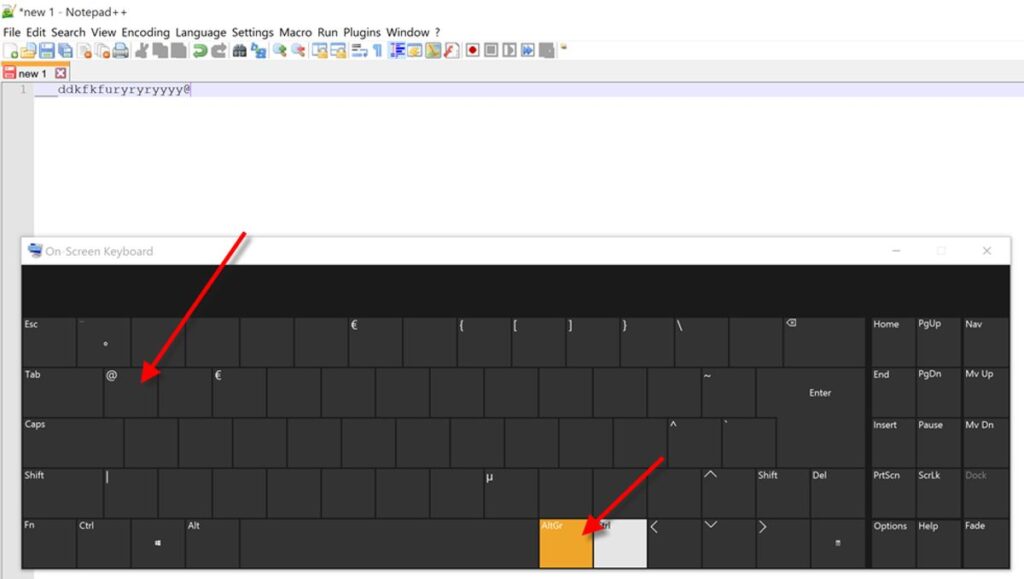The NSCocoaErrorDomain error code 4, which indicates the failure to find the specified shortcut, is a familiar obstacle for Cocoa developers. This article delves into the intricacies of the errordomain=nscocoaerrordomain&errormessage=could not find the specified shortcut.&errorcode=4, the significance of error code 4, and provides a comprehensive guide to troubleshooting and resolving this error. By understanding the root causes and employing strategic problem-solving techniques, developers can overcome this challenge and enhance the robustness of their Cocoa applications.
Key Takeaways
- Error code 4 in NSCocoaErrorDomain is a common issue related to missing shortcuts in Cocoa applications, which can be systematically diagnosed and fixed.
- Understanding the NSCocoaErrorDomain and its error codes is crucial for Cocoa developers to effectively debug and resolve issues within their applications.
- Systematic troubleshooting, including initial diagnostics and advanced techniques, is essential to identify and fix the ‘Could not find the specified shortcut’ error.
- Proactive error handling, thorough testing protocols, and awareness of common pitfalls can prevent the occurrence of such errors and improve application reliability.
- Access to additional resources, community forums, and documentation is invaluable for developers seeking to deepen their understanding of NSCocoaErrorDomain and error code 4.
Deciphering the NSCocoaErrorDomain Error Code 4

Understanding the errordomain=nscocoaerrordomain&errormessage=could not find the specified shortcut.&errorcode=4
When developers encounter the error message errordomain=nscocoaerrordomain&errormessage=could not find the specified shortcut.&errorcode=4, it’s crucial to dissect each component to troubleshoot effectively. The errordomain=nscocoaerrordomain part signifies that the error is within the Cocoa error domain, which is integral to macOS and iOS application development, particularly for user interface elements like shortcuts.
The error message ‘could not find the specified shortcut’ clearly indicates that the application is unable to locate a shortcut that was expected to be available. This error is often encountered when a shortcut that an application or script is programmed to use does not exist or cannot be accessed in the expected context.
Error code 4 is a specific identifier within theerrordomain=nscocoaerrordomain&errormessage=could not find the specified shortcut.&errorcode=4 that pinpoints the nature of the problem. Understanding this code is the first step in resolving the issue. Below is a breakdown of the error components:
errordomain: Specifies the error domain (errordomain=nscocoaerrordomain&errormessage=could not find the specified shortcut.&errorcode=4)errormessage: Describes the problem encounterederrorcode: Numerical identifier for the error type
It’s essential to approach this error with a methodical mindset, breaking down the message to understand the underlying issue before jumping into troubleshooting steps.
Common Scenarios Leading to the Error
When encountering the errordomain=nscocoaerrordomain&errormessage=could not find the specified shortcut.&errorcode=4 Error Code 4, it’s essential to consider the context in which it appears. This error code is used to indicate that a specific file, directory, or resource that an application or process is attempting to access cannot be located. Here are some common scenarios:
- File Operations: Issues during file operations such as reading, writing, or accessing files within the application sandbox are frequent culprits. The error may arise if the application tries to access a non-existent file or one that’s inaccessible due to permissions.
- Resource Management: The error can also emerge when managing resources, especially if the application fails to find a required shortcut or resource.
- Outdated Software: Sometimes, outdated software or incompatible extensions can trigger this error. Ensuring all components are up-to-date is vital.
- User Permissions: Restrictions on user permissions or security settings might also cause this error. Adjusting these settings could resolve the issue.
It’s important to not only fix the immediate error but also to understand the underlying causes to prevent future occurrences.
Interpreting the Error in Different Contexts
When dealing with the errordomain=nscocoaerrordomain&errormessage=could not find the specified shortcut.&errorcode=4, it’s crucial to consider the context in which the error occurs. This error, indicating a failure to find a specified shortcut, can manifest in various situations, each requiring a unique approach to resolution.
- File Operations: In file-related tasks, Error Code 4 may arise if an application tries to access a non-existent file or a file outside its sandbox.
- Resource Management: The error also appears when managing resources, especially if the app references missing or inaccessible assets.
Understanding the specific context helps developers pinpoint the root cause and apply the correct solution. For instance, a missing file in a macOS app requires checking the file path and permissions, while an iOS app might need a review of its sandbox environment.
By interpreting the error within its context, developers can streamline the troubleshooting process and avoid common pitfalls that lead to such issues.
Exploring the errordomain=nscocoaerrordomain&errormessage=could not find the specified shortcut.&errorcode=4 and Its Purpose

Defining errordomain=nscocoaerrordomain&errormessage=could not find the specified shortcut.&errorcode=4
The errordomain=nscocoaerrordomain&errormessage=could not find the specified shortcut.&errorcode=4 is a fundamental component within Apple’s ecosystem, serving as a classification system for errors that arise in Cocoa frameworks across macOS, iOS, watchOS, and tvOS. This domain is integral for developers to identify and address issues efficiently.
- It categorizes errors specific to Cocoa frameworks.
- Enables quick pinpointing of the source of an issue.
- Facilitates streamlined troubleshooting.
Role of Error Codes in Cocoa Development
In the realm of software development, encountering errors is an inevitable part of the process. These errors, often cryptic and perplexing, can impede progress and frustrate developers. However, they also serve as valuable clues, providing insights into underlying issues within the codebase. Error codes in Cocoa development, such as those from errordomain=nscocoaerrordomain&errormessage=could not find the specified shortcut.&errorcode=4, are integral to diagnosing and resolving issues.
Error codes streamline the debugging process by categorizing issues into identifiable groups. For instance, when you see an error code like errordomain=nscocoaerrordomain&errormessage=could not find the specified shortcut.&errorcode=4 with code 4, it indicates a specific issue related to finding a shortcut within the Cocoa framework. Each error code corresponds to a particular problem, allowing developers to quickly understand and address the root cause.
By using structured error domains like errordomain=nscocoaerrordomain&errormessage=could not find the specified shortcut.&errorcode=4, developers can mitigate the impact of such errors, enhancing the overall reliability and usability of Cocoa-based applications.
In large-scale Cocoa development projects, monitoring and logging errors are essential practices for maintaining application stability and diagnosing recurring issues. By integrating robust logging frameworks and error monitoring tools into the development workflow, developers can gain insights into error trends, identify systemic issues, and prioritize bug fixes effectively.
How errordomain=nscocoaerrordomain&errormessage=could not find the specified shortcut.&errorcode=4 Aids in Debugging
The errordomain=nscocoaerrordomain&errormessage=could not find the specified shortcut.&errorcode=4 plays a crucial role in the debugging process for developers working within Apple’s ecosystem. It acts as a categorization system for errors that arise in Cocoa-based applications, which are foundational to macOS, iOS, watchOS, and tvOS. This domain allows developers to quickly identify and address issues, streamlining the troubleshooting process.
- Error Identification: By providing specific error codes, such as error code 4, errordomain=nscocoaerrordomain&errormessage=could not find the specified shortcut.&errorcode=4 helps developers pinpoint the exact nature of the problem.
- Error Context: Understanding the context in which an error occurs is essential, and errordomain=nscocoaerrordomain&errormessage=could not find the specified shortcut.&errorcode=4 offers insights into the framework-level issues.
- Error Resolution: With clear categorization, developers can follow targeted strategies to resolve errors, improving the efficiency of their debugging efforts.
The structured approach of errordomain=nscocoaerrordomain&errormessage=could not find the specified shortcut.&errorcode=4 not only aids developers in identifying and resolving issues but also helps mitigate the impact of errors on the user experience.
Troubleshooting the ‘Could Not Find the Specified Shortcut’ Error

Initial Diagnostic Steps
When confronted with the ‘Could not Find the Specified Shortcut’ error, the initial diagnostic steps are crucial in setting the stage for a more in-depth investigation. Begin with an Application Audit to check for any recent changes or updates that might be causing issues. This preliminary step can often illuminate the root cause of the problem.
Next, delve into the File System Forensics. Ensure that all files and shortcuts are exactly where they should be. Missing or misplaced elements are frequent offenders in these cases. Here’s a quick checklist to guide you through the process:
- Review recent changes or updates to the application
- Verify the integrity and location of files and shortcuts
- Consult the Console Logs for detailed error messages
Remember, addressing application issues can sometimes be as straightforward as a restart or an update check. Don’t overlook these simple yet effective solutions.
Lastly, if the issue persists, consider reaching out for guidance. The developer of the application may provide additional troubleshooting steps or insights into potential solutions.
Advanced Troubleshooting Techniques
When initial diagnostics fail to resolve the ‘Could not Find the Specified Shortcut’ error, it’s time to delve deeper. Advanced troubleshooting requires a methodical approach and may involve steps that are more technical in nature. Here are some techniques to consider:
- Console Logs: Accessing the Console app can provide detailed error messages that are not visible through standard user interfaces. This can be a treasure trove of information for identifying the underlying issue.
- Application-Specific Guidance: Reach out to the application developer for potential solutions or workarounds that are tailored to the application in question.
- Error Handling and Logging: Implement robust error handling within your application and utilize logging tools to capture detailed insights. This can help in pinpointing the exact cause of the error.
- Third-Party Tools: For advanced users, third-party tools can offer additional diagnostic capabilities. However, be aware of potential security risks and software conflicts.
Remember, advanced troubleshooting is a process of elimination. Each step should bring you closer to identifying the problem, but patience and precision are key.
If all else fails, consider the last resort of uninstalling and reinstalling the application. This can sometimes clear up issues that are otherwise difficult to diagnose.
Utilizing Developer Tools for Error Resolution
Developer tools play a crucial role in resolving the ‘Could not find the specified shortcut’ error. Logging and debugging tools are essential for gaining insights into the root cause of the error. By examining logs, stack traces, and runtime variables, developers can pinpoint the source of the issue.
- Error Logging and Monitoring: Implement robust logging to capture detailed information about the error as it occurs.
- Debugging: Use debugging tools to step through the code and observe the state of the application when the error is triggered.
- Testing: Create specific test cases to replicate the error and validate the application’s behavior under various conditions.
By implementing localized error descriptions and recovery suggestions, developers can provide clear and actionable guidance, empowering users to navigate through error scenarios with confidence.
Preventative Measures and Best Practices

Proactive Error Handling Strategies
Proactive error handling is not just about responding to errors; it’s about anticipating them. By implementing effective error handling techniques, developers can improve the reliability and stability of their software, leading to a better user experience. Here are some strategies to consider:
- Implement robust error handling mechanisms within the application to gracefully handle scenarios where shortcuts or resources cannot be found. This includes displaying informative error messages and providing options for corrective actions.
- Utilize logging and debugging tools to gain insights into the root cause of the error. Examine relevant logs, stack traces, and runtime variables to pinpoint the source of the issue.
Embracing these best practices and incorporating them into the development process can cultivate a culture of resilience and adaptability.
Performance optimization and error prevention are also key. Techniques such as code profiling, performance tuning, and static code analysis can identify potential sources of errors early in the development lifecycle. Tools like Apple’s Unified Logging system and third-party monitoring solutions offer capabilities for capturing and aggregating error logs, enabling continuous improvement of Cocoa-based applications.
Implementing Robust Testing Protocols
To ensure the reliability and quality of Cocoa-based applications, implementing robust testing protocols is essential. By prioritizing code quality and adhering to established coding standards, developers can minimize the occurrence of errors like errordomain=nscocoaerrordomain&errormessage=could not find the specified shortcut.&errorcode=4.
Adopting a test-driven development (TDD) approach allows for comprehensive unit and integration tests that validate application behavior and uncover potential issues. This proactive strategy is crucial for identifying edge cases and corner scenarios that may lead to errors.
Embracing best practices in testing not only prevents errors but also cultivates a culture of resilience and adaptability, enabling developers to handle error-prone situations with confidence.
Incorporating thorough testing under various conditions is key to replicating and isolating errors. Creating specific test cases that trigger the error can validate the application’s behavior and ensure continuous support beyond resolving the current issue.
Tips for Avoiding Common Pitfalls
To ensure smooth sailing in Cocoa development, it’s crucial to embrace best practices that prevent the ‘Could not Find the Specified Shortcut’ error. Here are some actionable tips:
- Regular Reviews: Periodically check your system and application shortcuts to avoid surprises.
- Education: Stay informed about error messages and the importance of maintenance.
- Error Handling: Develop robust mechanisms to manage missing shortcuts or resources.
- Logging and Debugging: Use tools to understand the root causes of errors.
By prioritizing code quality and adhering to coding standards, developers can reduce errors and improve application stability.
Remember, Error Code 4 in the errordomain=nscocoaerrordomain&errormessage=could not find the specified shortcut.&errorcode=4 context specifically refers to a situation where a required file or directory cannot be found. Proactive measures can significantly diminish the likelihood of encountering this issue.
Conclusion and Additional Resources

Summary of Key Takeaways
In conclusion, effectively resolving the ‘Could not Find the Specified Shortcut’ error with ErrorCode 4 involves a comprehensive understanding of the errordomain=nscocoaerrordomain&errormessage=could not find the specified shortcut.&errorcode=4 and its error codes. Key takeaways include:
- The importance of understanding the context in which the error occurs.
- The role of errordomain=nscocoaerrordomain&errormessage=could not find the specified shortcut.&errorcode=4 in providing detailed error information to developers.
- The necessity of initial diagnostic steps and advanced troubleshooting techniques.
- The value of implementing proactive error handling strategies and robust testing protocols.
By adhering to these principles, developers can minimize the occurrence of errors and streamline the debugging process.
Remember to regularly review your system and application shortcuts to prevent conflicts and ensure that modifier keys are used correctly. Educate yourself on the common causes of errors and stay informed about best practices in Cocoa development.
Further Reading and Documentation
To deepen your understanding of the errordomain=nscocoaerrordomain&errormessage=could not find the specified shortcut.&errorcode=4 and effectively troubleshoot the ‘Could not Find the Specified Shortcut’ error, a wealth of resources is available at your fingertips. The Apple Developer website is the primary repository for comprehensive documentation on Cocoa and related frameworks. Here, you can find detailed explanations of error codes, including the elusive Error Code 4.
For a more interactive learning experience, the developer forums and videos provide a platform to engage with the community and experts. These resources can offer practical insights and real-world solutions to common problems:
- Documentation
- Forums
- Videos
Additionally, for direct support and reporting issues, the following services are invaluable:
- Support Articles
- Contact Us
- Bug Reporting
- System Status
Remember, maintaining a proactive approach to error handling and documentation is crucial for efficient problem resolution and knowledge sharing among developers.
Community Forums and Support
When facing the ‘Could not Find the Specified Shortcut’ error, community forums can be an invaluable resource. Engaging with the community can provide practical solutions and insights from developers who have encountered similar issues. Below is a list of forums and support channels that can assist you:
- Apple Developer Forums
- Stack Overflow
- GitHub Issues (for open-source projects)
- Reddit’s /r/macOS and /r/apple subreddits
Remember, continuous learning and staying updated on software developments are key to overcoming technical challenges like these. Always proactively seek resources and support from relevant forums or community platforms where experts share their insights.
It’s important to review the participation guidelines and respect the community ethos when posting queries. For instance, the Apple Developer Forums require adherence to their Participation Agreement, ensuring a constructive environment for all users.
Conclusion
In summary, the error message errordomain=nscocoaerrordomain&errormessage=could not find the specified shortcut.&errorcode=4 is a signal to developers that there is an issue with locating a specific shortcut within a Cocoa-based application. This article has provided a comprehensive guide to understanding the errordomain=nscocoaerrordomain&errormessage=could not find the specified shortcut.&errorcode=4, identifying the possible causes of Error Code 4, and offering systematic solutions to resolve it. By applying the troubleshooting steps and adopting proactive error handling and testing practices, developers can not only fix this error but also enhance the reliability and user experience of their applications. Remember, patience and a methodical approach are key to effectively dealing with such errors in the development process.
Frequently Asked Questions
What is errordomain=nscocoaerrordomain&errormessage=could not find the specified shortcut.&errorcode=4?
errordomain=nscocoaerrordomain&errormessage=could not find the specified shortcut.&errorcode=4 is a domain that defines errors within the Cocoa framework, including errors related to file operations, property list serialization, and other Cocoa-specific functionalities.
Why am I getting the error message ‘could not find the specified shortcut’ with error code 4?
This error typically occurs when an application or system process cannot locate a specific shortcut or alias needed to execute a certain task.
What are common scenarios that lead to the ‘Could not find the specified shortcut’ error?
This error can manifest in various scenarios, primarily revolving around file operations or resource management within Cocoa-based applications.
How can I troubleshoot the error code 4 in errordomain=nscocoaerrordomain&errormessage=could not find the specified shortcut.&errorcode=4?
Troubleshooting this error involves understanding the underlying causes, following systematic troubleshooting approaches, and utilizing developer tools for error resolution.
What preventative measures can I take to avoid the ‘Could not find the specified shortcut’ error?
Proactive error handling, robust testing practices, and ensuring proper configuration of shortcuts within the application can help avoid this error.
Where can I find more information and support for resolving errordomain=nscocoaerrordomain&errormessage=could not find the specified shortcut.&errorcode=4 errors?
Further reading and documentation can be found in Apple’s developer resources, and community forums and support channels can provide additional help.
Read Also: A TRUE RELATIONSHIP IS TWO IMPERFECT PEOPLE REFUSI – TYMOFF







